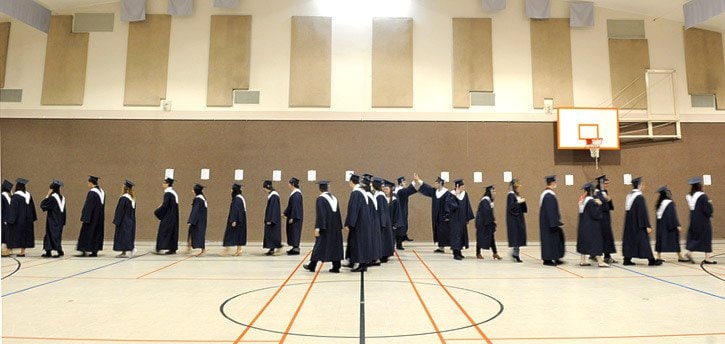Chilliwack's high school graduation rates are continuing to increase, but still fall below the provincial averages.
The province released B.C.'s six-year completion rates this week, showing that 84.2 per cent of students are graduating within six years from first enrolling in Grade 8.
In the Chilliwack school district, that number is 80 per cent, according to report by Superintendent Evelyn Novak released in December.
There is a similar disparity for five-year completion rates. In Chilliwack, 75 per cent of students complete their studies in five years. Overall, the provincial rate of five-year completion is 80 per cent.
But all of those numbers, provincially and locally, have increased over the past five years, and for Chilliwack the changes are drastic. In 2007, only 66 per cent of Chilliwack students were completing school within five years. The following two years, that number dove to 64 per cent.
Sylvia Dyck, trustee board chair, said the improvements are "due to the diligence and good work of our staff each and every day, along with the programs we're providing to our students."
She noted the increased graduation rates for First Nation students as a sign that the district's focus is "really showing results."
Last year, 56 per cent of Chilliwack's First Nation students completed high school within five years, and 66 per cent finished within six years. That number is actually higher than the provincial average of 61.6 per cent. Over the last eight years, Chilliwack's First Nation graduation rate hit a low of 34 per cent, in 2010.
"We're certainly pleased to see an upward trend," Dyck said. "But we're never satisfied, of course. Our staff is learning and finding new ways of reaching our students."
Novak's report, which was initially presented at the Dec. 2 board meeting, notes several areas of concern in the district.
"Although the trends over time show the gap between the achievement of our aboriginal students and all students is improving, we are still concerned about the gap," she wrote.
She also noted a continuing gap between male and female student successes, with more girls graduating than boys. While that gap is narrowing, Novak wrote, "it still exists."
Being below the provincial average for six year completion rates remains a concern, she said, despite the recent increases. Finally, Novak pointed out grade-to-grade transitions from Grades 10 to 12, including a chart that illustrates how many students are not successfully moving along to higher grades.
The 19-page report also includes several plans of action to continue increasing student success, including long-standing programs for young readers, intervention for at-risk middle schoolers, partnerships with outside organizations and continued teacher training.
The report will be discussed in more detail at the Jan. 20 school board meeting.
jpeters@theprogress.com
